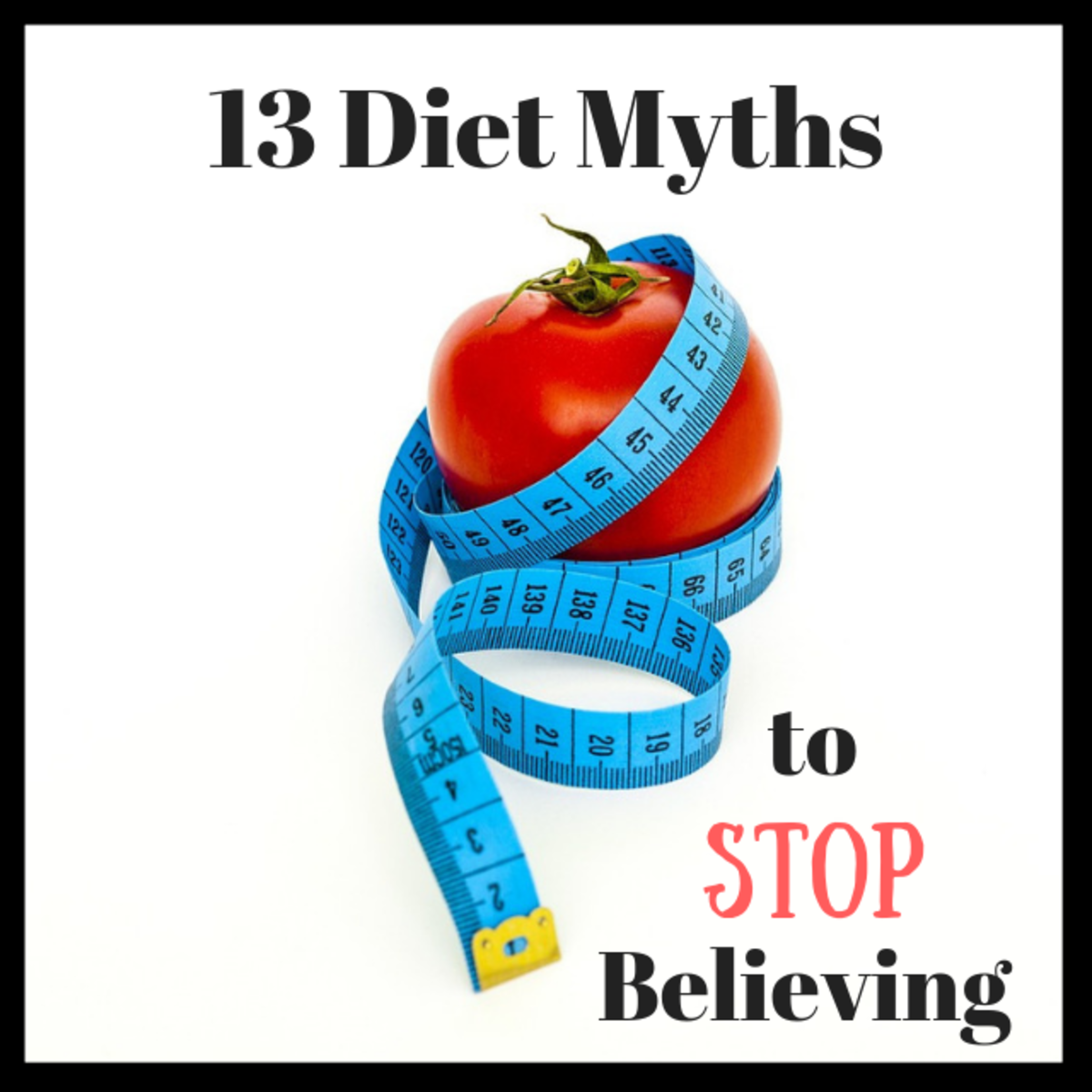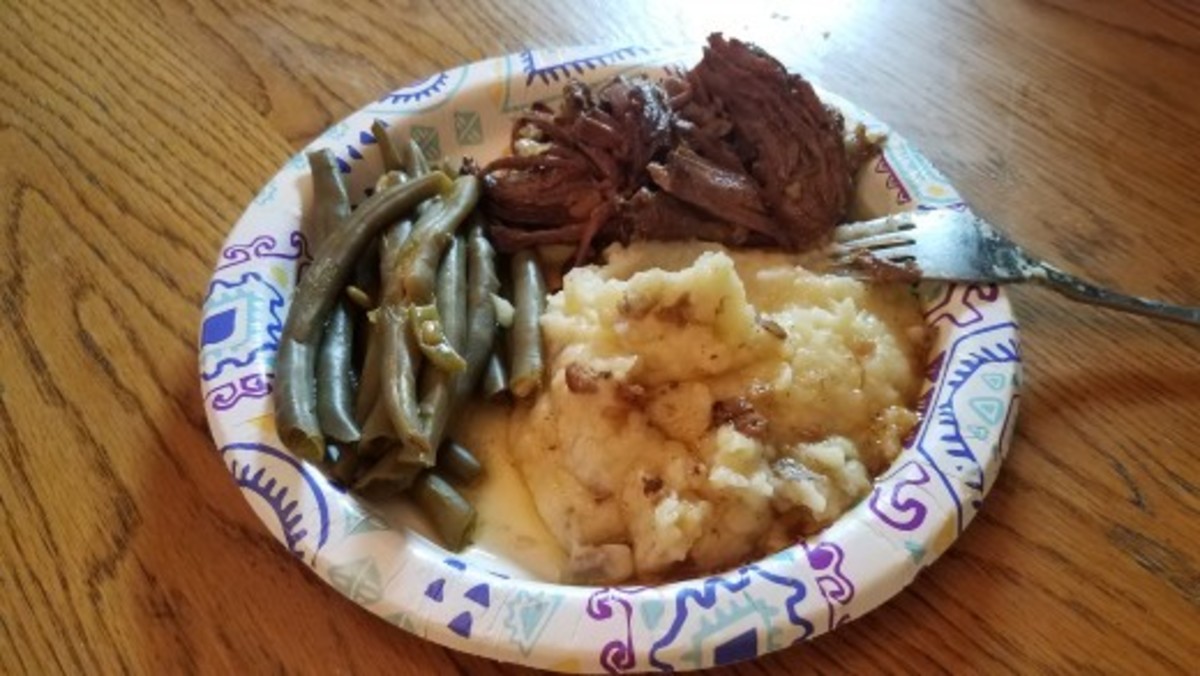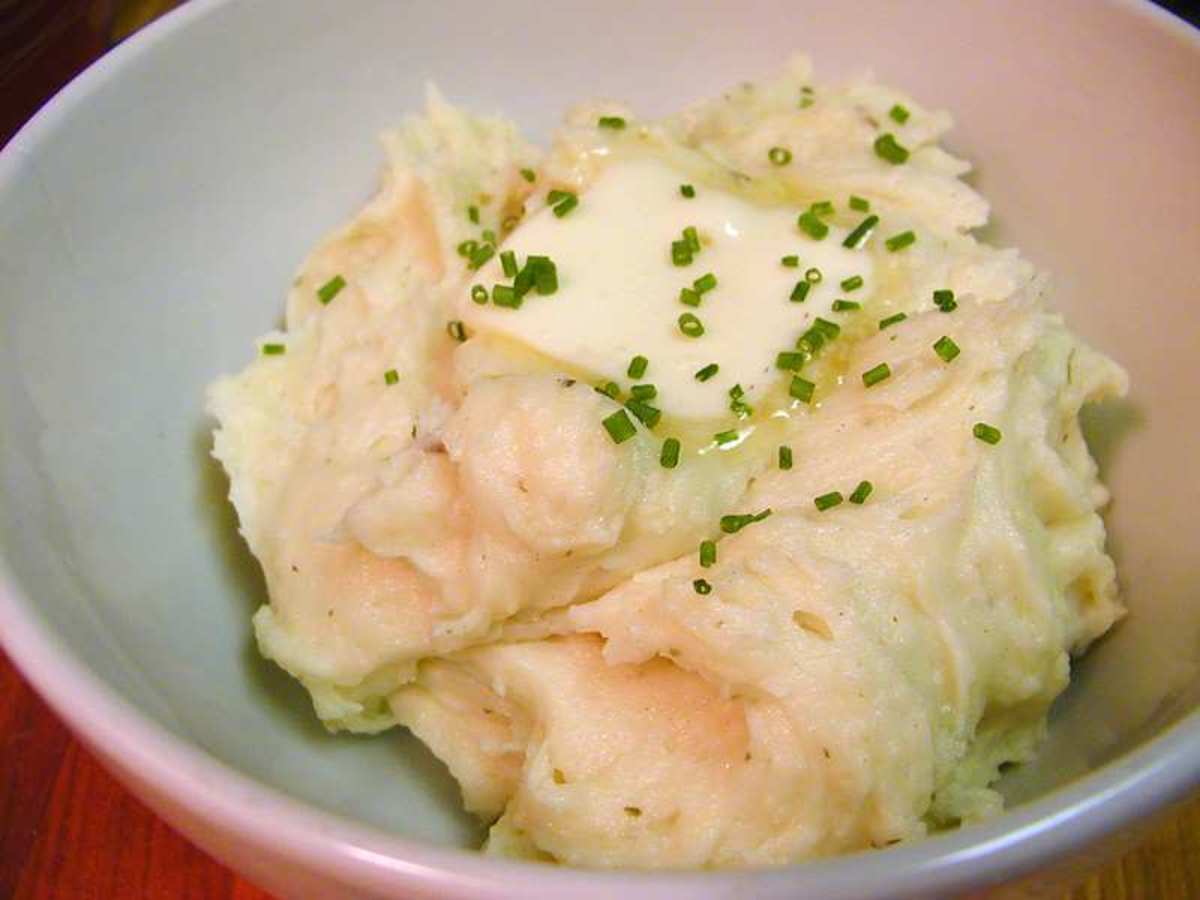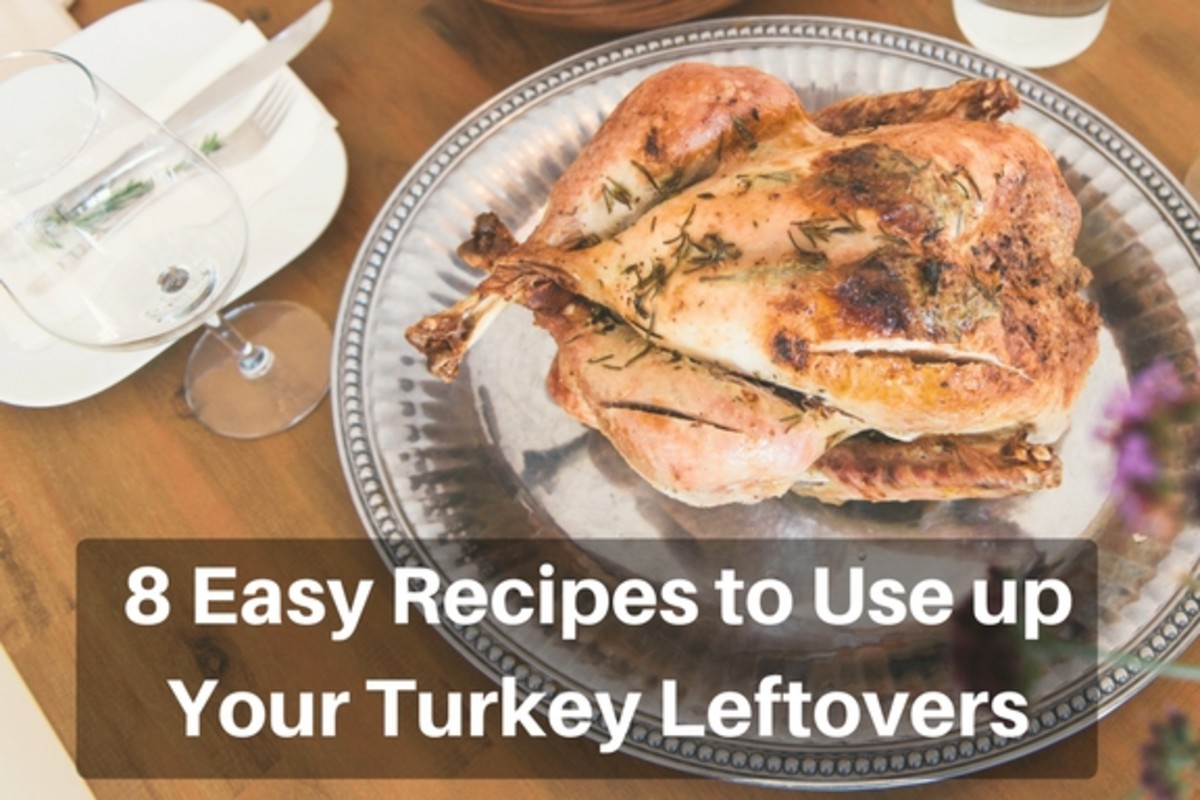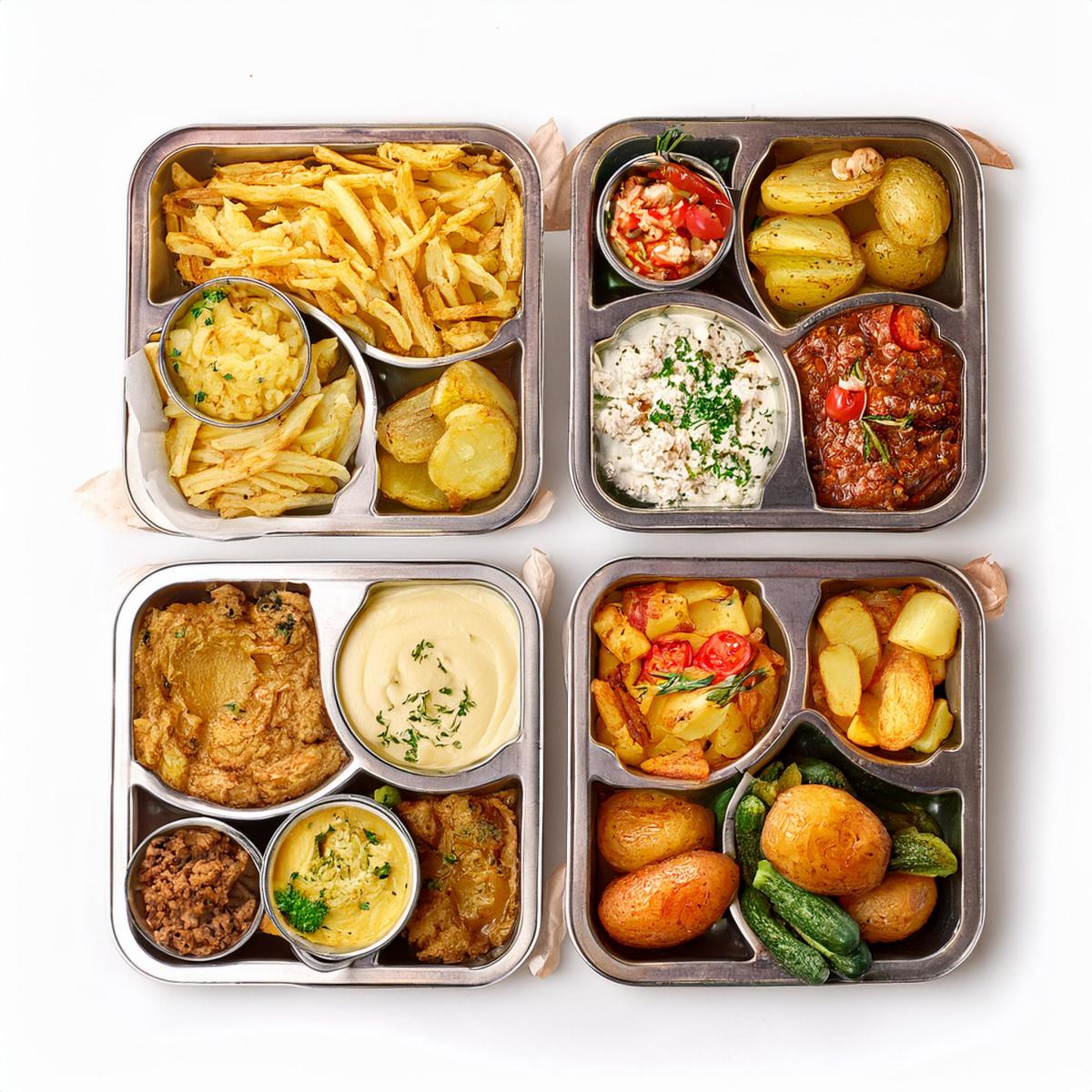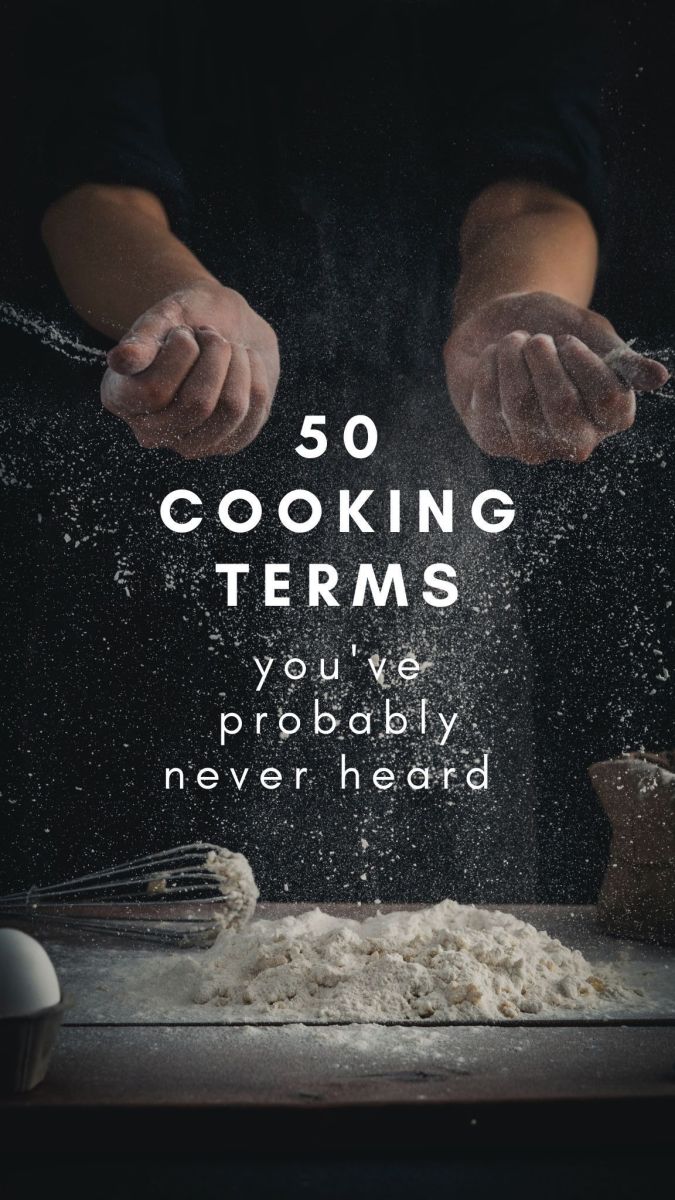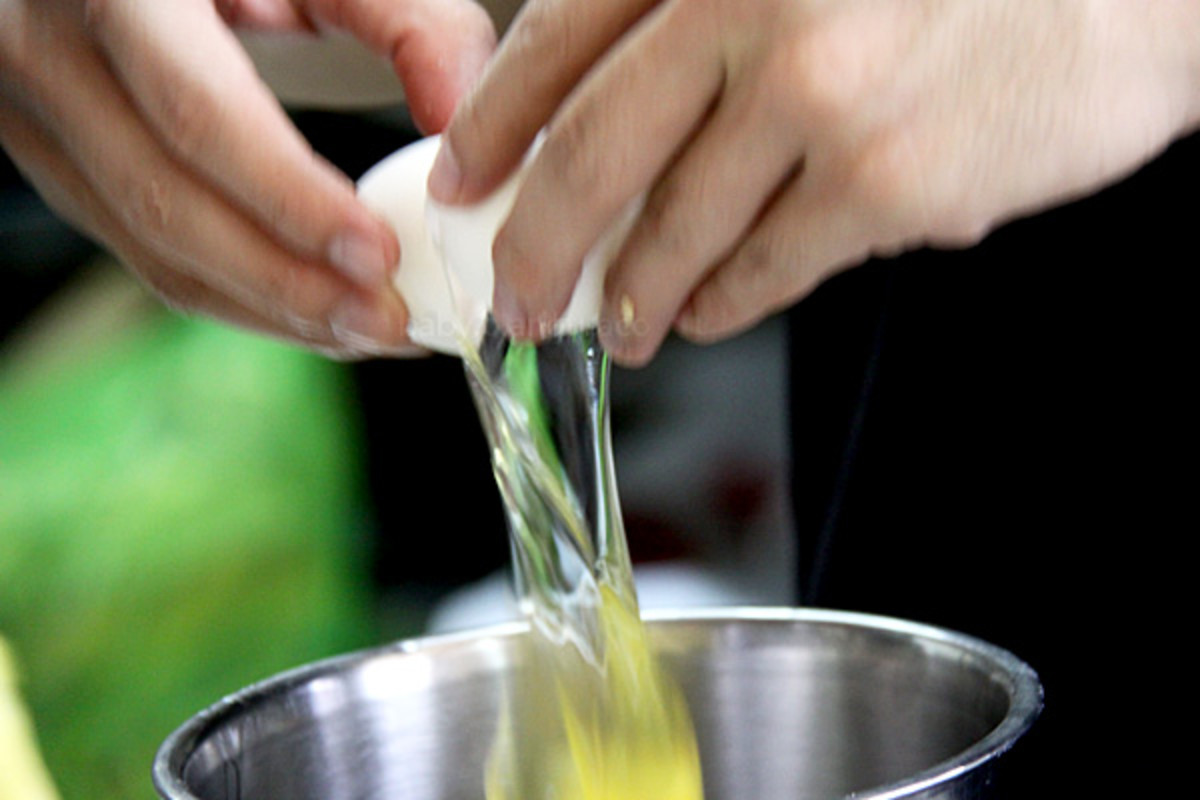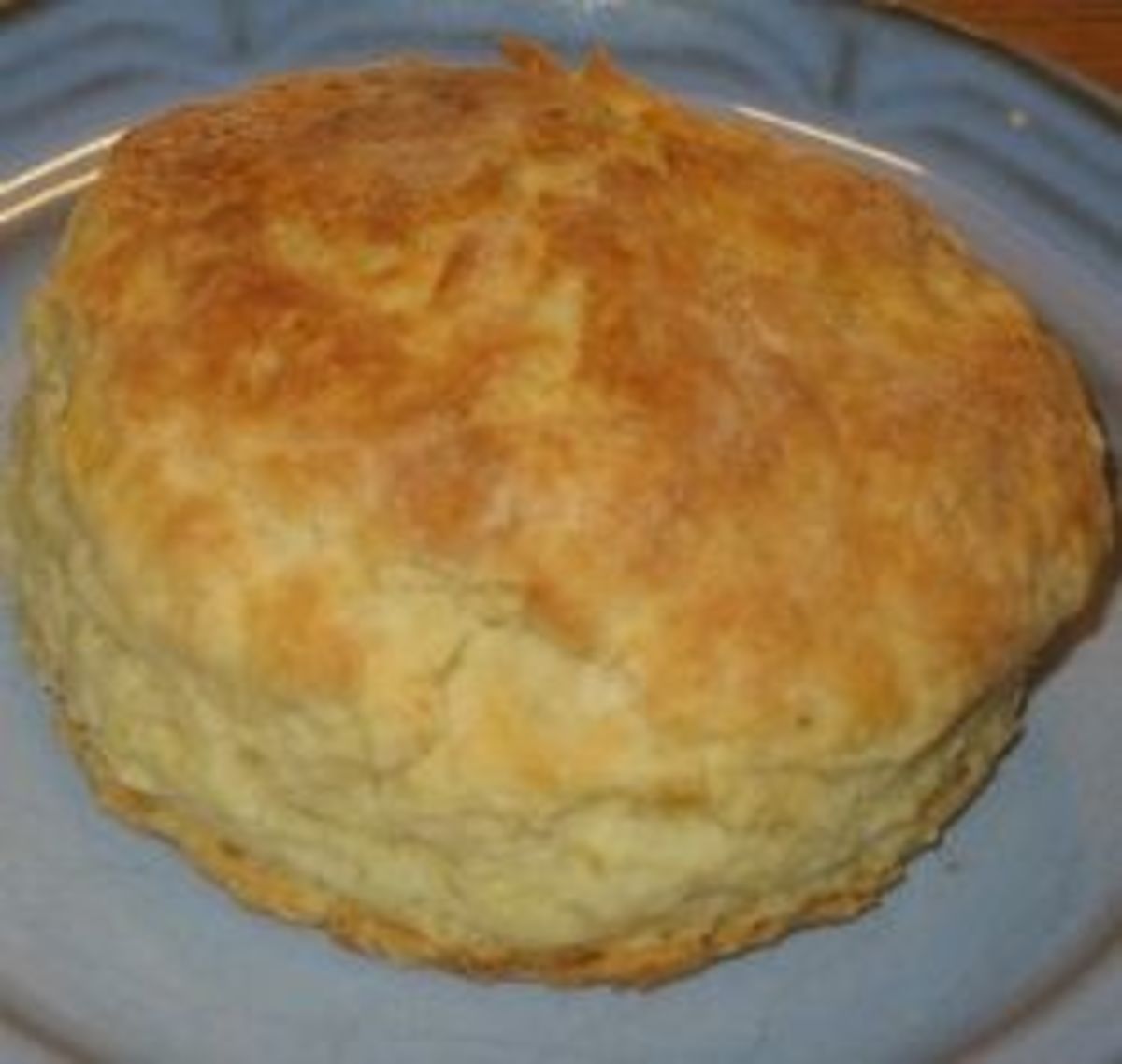Ask Carb Diva: Questions & Answers About Food, Recipes, and Cooking, #28
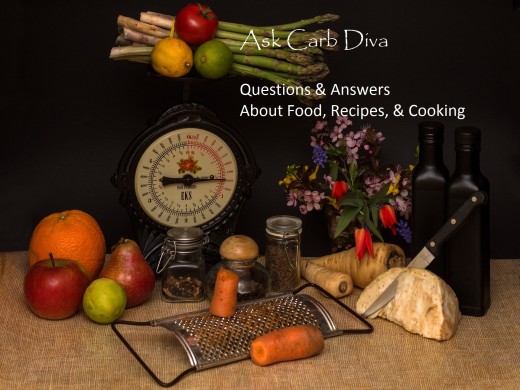
What's faster than a speeding bullet, glows brightly like a burning coal, arrives at my house at the crack of dawn, doesn't depart until the sun goes down, and weighs less than 4 grams?
You're probably wondering what this has to do with cooking. Honest answer - absolutely nothing. I just think that they're beautiful, adorable (especially when they tap on the window because the feeder is empty), and I wanted to share a little of that "happy" with you.
By now my weekly readers know the drill. This is not a tutorial. There are different topics each week. You ask the questions, and I furnish the answers. Thusfar, I believe that I'm batting 1,000, but I'll leave the scoring up to you, the readers.
Let's look at what the mailman delivered last week.
How to Reduce Sugar in Your Diet
I am cutting way back on sugar and salt. Things are going great. But I still have that sweet tooth. Is there a natural sweetener that can be used? Sure I understand about processed sugar substitutes.
But what about recipes that call for sugar? Is there a substitute in that arena?
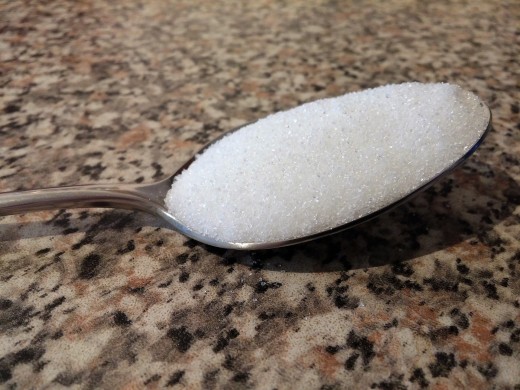
Eric, good for you for striving to reduce salt and sugar in your diet. They are both seductive, addictive, and unnecessary. Let's examine why white (granulated) sugar is such a bad idea.
Most of the studies on the negative effects of white sugar examine the diets of people who are already in a downward spiral of consuming a junk-food laden, high carbohydrate "Western" diet. Those people have, by their bad habits, created a situation in which they find themselves struggling with obesity, high blood pressure, and insulin resistance. For those people, white sugar is toxic!
Artificial sweeteners cause another set of problems on their own. Although they are "low-" or "no-calorie," they can trigger an unexpected rebellion in the body.
The data clearly indicate that consuming a food sweetened with no-calorie saccharin can lead to greater body-weight gain than the same food sweetened with high- calorie sugar.
— "Journal Behavioral Neuroscience", American Psychological AssociationAn excellent report on those findings was recently published in The Daily Mail, UK.
However, if you eat a healthy (low saturated fat, high fiber) diet, natural-based sweeteners are a good option, and there are many from which to choose. The following information was obtained from NOW Health Group, Inc.
A Comparison of Other Natural Sweeteners to White Sugar
Sweetener
| Sweetness Compared to White Sugar
| Glycemic Index
| Glycemic Impact*
|
|---|---|---|---|
Agave Nectar
| 1.5 times sweeter
| 10-19
| Low
|
Coconut Sugar
| Same
| 35-42
| Low
|
Date Sugar
| Same
| 103
| High
|
Honey
| Approx. the same
| 50-80
| Med. to High
|
Maple Syrup
| 1/2 the sweetness
| 54
| Low
|
Stevia
| Up to 300 times sweeter
| 0
| Low
|
* Low Glycemic Index is <55, Medium is 56-69, High is >70
Glycemic index measures how different types of carbohydrate-containing foods raise blood glucose levels within two hours of ingestion.
Eric, one thing that you hinted at in your question is how to substitute another sweetener for sugar. As you might expect, it's not always a 1:1 ratio.
Agave nectar - For each cup of sugar use 2/3 cup agave and reduce the other liquid(s) in the recipe by 1/3 cup.
Coconut sugar - You can use the same amount of coconut sugar as you would white sugar in a recipe, but it's more flavorful (hints of brown sugar or molasses-like qualities)
Date sugar - You can retain the 1:1 ratio, but some cooks prefer to reduce the amount they use by 1/3 because of the complex flavors. Don't use date sugar in baking. It burns easily. It also clumps easily (absorbing moisture in the air) so needs to be stored in a tightly-sealed container).
Honey - There are many different types of honey. Some have subtle sweet flavors and others are bolder. It all depends on the type of flower from which the honey was collected. Honey is also acidic, so if you are using it in baking that acidity needs to be tempered with a touch of baking soda. These conversions are from the website EatBeautiful:
- 1/4 cup sugar = 3 T. honey, reduce oven temperature by 25 degrees
- 1/3 cup sugar = 3 T. + 1 tsp. honey, reduce oven temperature by 25 degrees
- 1/2 cup sugar = 1/3 cup honey, add 1/4 tsp. baking soda, reduce potential liquid by 1 T., reduce oven temperature by 25 degrees
- 1 cup sugar = 3/4 cup honey, add 1/2 tsp. baking soda, reduce potential liquid by 1/8 cup (2 T.), reduce oven temperature by 25 degrees
- 2 cups sugar = 1 cup + 6 T. honey, add 1 tsp. baking soda, reduce potential liquid by 1/4 cup, reduce oven temperature by 25 degrees
Maple syrup - Use 1/4 less (for each cup of sugar, use only 3/4 cup maple syrup). Because syrup is a liquid, you need to reduce the total amount of liquid in your recipe; for each cup reduce liquids by 3 tablespoons. It also burns more easily so reduce oven temperature by 25 degrees.
Stevia - Much sweeter than sugar (1/32 of a tsp. is the equivalent of 2 tablespoons of sugar). Difficult (but not impossible) to convert for baking because the bulk of white sugar contributes to the physical structure of your baked goods. Here are some useful tips for those conversions.
How to Broil Chicken (and Be Happy With the Result)
Do you have any tips on how to broil chicken?
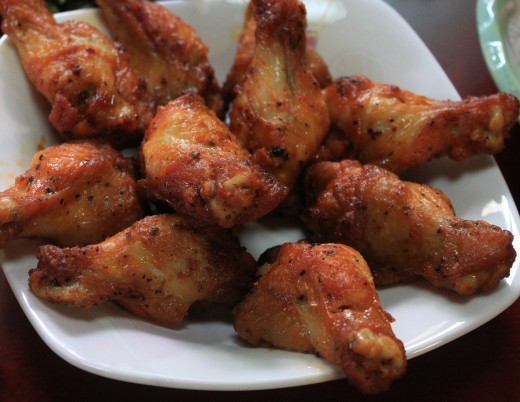
The problem with broiling chicken is that not all chicken parts are created equal. When the breast portions are done, the thighs are still chewy, and when the legs and thighs are at their best, the breasts have become as dry as sawdust. What's a cook to do?
If you are broiling chicken breasts only, here is a specific instructions for the distance between the heating element and the chicken. Easy peasy.
If you opt for chicken legs, this recipe by MeaningfulMama can be ready in 30 minutes. There is a bit of "fuss" required in moving the pan several times, but the result is perfectly moist broiled chicken.
My favorite part of the chicken is the thigh. Bone-in is the way to go. Rich, moist, and so full of flavor. Taste of Home always publishes straight-forward tested recipes and their broiled garlic chicken thighs don't disappoint. And, speaking of chicken thighs, tomorrow I will publish an article entitled "Baked Chicken Thighs: The Most Amazing, Versatile Recipe EVER." Stay tuned.
Is a whole broiled chicken in your future? The cooks at The Spruce explain how to spatchcock a chicken, and cook it from start to finish under the broiler. If you want to see a demonstration of how to spatchcock a chicken, watch this video by my friend Kenji. His accompanying recipe for roasting that chicken is great too!
Lexicon of Cooking Terms

Getting closer to the end of the alphabetical look at strange, obscure, and/or unusual cooking terms:
Steep - To extract color, flavor, or other qualities from a substance by leaving it in water just below the boiling point.
Stir-Fry - A high-heat cooking method often associated with Asian cooking where ingredients are cooked in a small amount of hot oil while constantly being stirred. Stir-fries are often prepared in a cooking vessel called a wok but you can stir fry in a frying pan as well.
Sweat - To cook slowly over low heat in butter, usually covered, without browning.
Tapenade (ta pen AHD) - A thick paste made from capers, anchovies, olives, olive oil, lemon juice, and seasonings. This delicious condiment originated in France’s Provence region.
Temper - Technically, to moderate. In cooking, tempering most often refers to slightly warming beaten eggs, by rapidly stirring a little of the hot ingredients into them, before adding them to the hot mixture so that they will combine, stirring rapidly again, without solidifying (turning into scrambled eggs).
How to Lower Your Cholesterol Levels
I am told by my doctor that I have to lower my cholesterol....for your Mailbag....recommended foods besides fish and nuts????
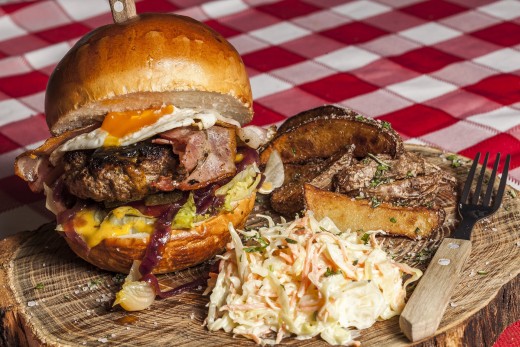
Cholesterol can be bad (LDL, aka low-density lipoprotein). . . and good (HDL, or high-density lipoprotein). Cholesterol is an oil-based substance that is produced by our bodies. At normal levels it aids in digestion, produces hormones, and generates Vitamin D. That's the good part. But too much of the LDL leads to sticky plaque (not unlike the goo that leads to tooth decay) clinging to the walls of your arteries, constricting blood flow, and leading to high blood pressure and even the possibility of stroke.
There are numerous reasons besides unwise eating habits that contribute to unhealthy cholesterol levels. Obesity, diabetes, pregnancy, underactive thyroid, and certain medications (such as steroids) can all negatively affect our HDL/LDL balance. Genetics can also play a role.
Are there ways to manage the good and bad levels of cholesterol in our bloodstream without medication? Yes, certainly, and Bill is striving to make that happen with increased exercise (walking Maggie), and dietary changes. A diet rich in fish (salmon) and nuts is a great start, but that's just the beginning. Let's look at the other possibilities.
These Can Lower Cholesterol
| You Should Reduce Your Intake of These
| You Should NEVER Eat These
|
|---|---|---|
oats, oatmeal, barley
| bakery muffins, biscuits
| |
whole grains
| snack crackers, cookies
| microwave popcorn
|
beans
| red meat
| shellfish
|
foods rich in fiber
| deep-fried foods
| |
canola or sunflower oil
| butter
| full-fat milk, cheese
|
apples, grapes
| applesauce
| margarine
|
soy-based foods
| tilapia (low in omega 3's)
| liver and other organ meats
|
Do you remember when the phrase "What Would Jesus Do?" was popular? Well, it's not just a mantra to cause us to reflect on our behavior; I think it could be applied to our dietary health as well. Eat whole grains, fish, lean meat, fresh fruits, and vegetables. No sugars, candy, deep-fried or fast foods.
What do you have to lose (other than some troublesome cholesterol readings, high blood pressure and perhaps even a few pounds)?
How To Use Leftover Mashed Potatoes
Do you have any suggestions for leftover mashed potatoes other than making potato cakes?
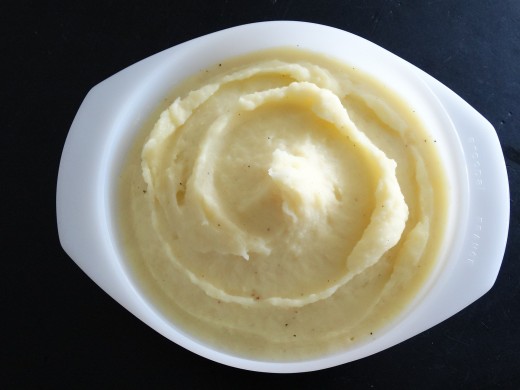
Mary, I loved mashed potato cakes. My mom would stir an egg and some flour into the cold leftover mash, form patties, and then fry them in a pan (probably with bacon grease). Crispy on the outside, creamy on the inside, and perfect comfort food.
But, sometimes you need something different. Oh, there are so many options. First, not to be too "promotional" (HP hates that), but I do have an article here that tells how to turn leftover mashed potatoes into candy. Yes, you heard it here first. Candy.
But I have more ideas up my sleeve. No doubt, you've heard of shepherd's pie. If not, let me quickly explain. Create a stew. Use your protein of choice (if not lamb, then it becomes a cottage pie, but let's not worry about vernacular at this time). Make some gravy, toss in a few veggies (peas and carrots are always a good option). And then, instead of cooked potatoes in the stew, place the mix in a baking dish and then cover with leftover mashed potatoes. Bake until the bottom is heated and the top is golden brown and crispy. Yum!
The blog "ThePerfectPantry" suggests a lush, creamy soup made from mashed potatoes, and it's wonderful. Rich and indulgent. But, that's not the end of the story. Mashed potatoes can be stirred into any soup if you want to make it thicker without using cream or a roux. Clam chowder, cream of pea (or any other veggie) soup, or even chicken soup can be plumped up with an addition of mashed potatoes. Go rogue!
And then, there is gnocchi. How can I begin to describe these Italian potato dumplings? Fluffy, light, luxurious. Angelical might be too lofty praise, but they are close to Heavenly.
I plan to publish an article on Loving Leftovers: Mashed Potatoes on May 1.

- Thank you to everyone who contributed this week.
- Thank you to those of you who kept reading to the end.
- Are you feeling left out?
- Want to join in the fun? If you have questions I have answers.
- Leave your queries in the comments below, or (if you want to remain anonymous, write to me at lindalum52@gmail.com.
Have a great week!
© 2018 Linda Lum

